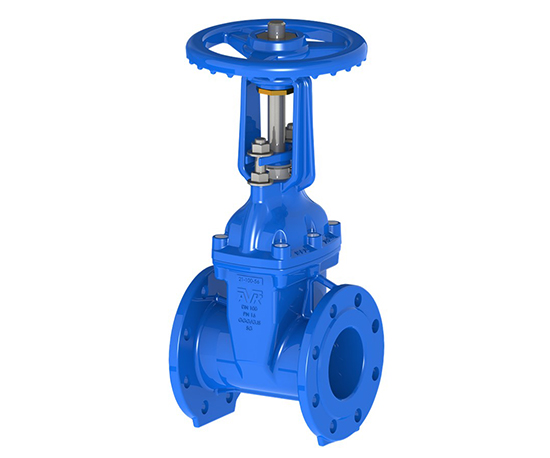
The role of soft sealing gate valve
The soft sealing gate valve is one type of valves generally used to control the flow rate, pressure, and direction of liquids and gases, as well as to start and stop their flow. Valves are designed according to their usage and installation locations. They are made from metals suitable for the type of liquid and gas they handle. The flow path and direction are determined by the shape of the valve body. Sometimes, there’s a need for flow in one direction only in a network pipe.
This article presents the role and usage of the soft sealing gate valve, providing an understanding of its purpose. The gate valve is a highly important component in pipelines that transport liquid media.
The structure of the gate valve consists of the valve body, valve cover, valve stem, gate plate, sealing ring, and actuator. The actuator is typically a handwheel but can also be equipped with an air or electric motor.
Structure and Operation of the Gate Valve
The gate valve is disc-shaped, and the valve stem is operated to achieve the opening and closing of the valve. The movement direction of the valve stem and gate is perpendicular to the valve body and the flow direction of the fluid in the pipeline.
The gate valve has only two positions, fully open or fully closed. Therefore, it can only be used to cut off the flow of medium in the pipeline and cannot regulate the flow rate.
Additionally, the gate valve’s function is suitable for use in pipelines that do not require frequent opening and closing and are used as a means of cutting off or connecting the medium in the pipeline.
The gate valve gate has two sealing surfaces. When the gate valve is closed, the gate closure surface can be pressed against the seat on one side by medium pressure to achieve sealing, which is self-sealing.
Types of Soft Sealing Gate Valves
Gate valves can be divided into rising stem gate valves and non-rising stem gate valves according to their structural shape. The functional differences between the two structural shapes of gate valves are not significant. The main difference lies in the usage environment.
The rising stem gate valve reveals the valve stem. The opening and closing status of the valve can be sensed intuitively when the valve is opened and closed, avoiding misoperation. However, because the valve stem is exposed, the height of the rising stem gate valve. That was originally large in height, and becomes larger. Therefore, the rising stem gate valve is suitable for use in places that require a large operating space but is not suitable for narrow working conditions.
The valve stem of the non-rising stem gate valve is hidden inside the valve body. Therefore, the opening and closing status of the valve cannot be directly observed, requiring another signaling device. However, because the valve stem is located inside the valve body. The size of the non-rising stem gate valve is smaller than that of the rising stem gate valve. Making it more suitable for use in applications with limited operating space and dense pipelines.
Mechanism of Operation of the Soft Sealing Gate Valve
When the gate valve is fully open, there is no obstacle as the medium flows through the passage inside the valve body. And the flow resistance is almost zero. Additionally, the channel of the gate valve’s valve body is symmetrical on both sides. Allowing the medium to flow in both directions unaffected by the medium’s flow direction during installation.
The gate valve is used in a wide range of applications due to its good manufacturing process. Gate valves have a wide range of uses and are widely used in water conservation systems. Water supply and drainage systems, as well as in petroleum, chemical, electric power, urban construction, and fire protection industries.


























